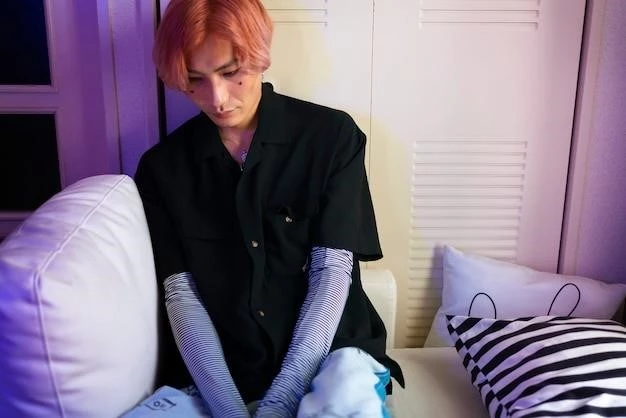Causes of Cryophobia
Cryophobia can stem from genetic factors, traumatic experiences,
and environmental triggers. Understanding these causes is crucial.
Genetic Factors
In some cases, a predisposition to develop cryophobia can be
linked to genetic factors passed down through family history.
Exploring these genetic markers can provide insight into the condition.
Traumatic Experiences
Exposure to traumatic events such as accidents or extreme cold can
trigger cryophobia. These experiences may lead to a fear response
associated with cold temperatures, contributing to the phobia.
Environmental Triggers
Environmental factors like being in cold climates or having
difficulties regulating body temperature can be triggers for
the development of cryophobia. Understanding these triggers is
essential in addressing the phobia.

Symptoms of Cryophobia
Physical, psychological, and behavioral symptoms manifest in
individuals with cryophobia, impacting their daily lives significantly.
Physical Symptoms
The physical symptoms of cryophobia can include increased heart rate,
sweating, shortness of breath, trembling, and nausea when exposed to cold
or even at the thought of cold temperatures.
Psychological Symptoms
Individuals with cryophobia may experience anxiety, panic attacks,
and avoidance behaviors related to cold environments, impacting their
mental well-being and quality of life.
Behavioral Symptoms
Behavioral symptoms of cryophobia may include avoiding cold places,
wearing multiple layers of clothing even in warm environments, and
limiting outdoor activities to prevent exposure to cold.
Treatment Options for Cryophobia
Several effective treatment approaches exist to help individuals
manage and overcome cryophobia, improving their quality of life.
Each option is tailored to the individual’s needs.
Cognitive-Behavioral Therapy
Cognitive-behavioral therapy (CBT) is a common and effective
approach for treating cryophobia. It helps individuals identify and
modify negative thought patterns and behaviors associated with the phobia.
Exposure Therapy
Exposure therapy is a therapeutic technique that involves gradual
and controlled exposure to cold environments or stimuli, helping
individuals with cryophobia confront and overcome their fear.
Medication
Medication may be prescribed in some cases to manage
symptoms of cryophobia, such as anxiety or panic attacks.
Consultation with a healthcare provider is essential for proper
medication management.
Coping Mechanisms for Cryophobia
Implementing effective coping strategies can help individuals
with cryophobia manage their symptoms and improve their quality of life.
Relaxation Techniques
Utilizing relaxation techniques like deep breathing, meditation,
and progressive muscle relaxation can help individuals with cryophobia
manage anxiety and stress associated with cold temperatures.
Mindfulness Practices
Mindfulness practices such as focused breathing and staying
present in the moment can aid individuals in managing their
emotional responses to cold-related triggers associated with cryophobia.
Support Groups
Support groups provide a valuable platform for individuals with
cryophobia to connect, share experiences, and receive empathy
and encouragement from others facing similar challenges.
Understanding the Psychological Aspects of Cryophobia
Exploring the psychological aspects of cryophobia sheds light on
the intricate interplay between fear response mechanisms and mental
health in individuals affected by this phobia.
Impact on Daily Life
The impact on daily life for individuals with cryophobia can lead to
significant challenges in performing routine activities and social
interactions, affecting their overall quality of life and well-being.
Fear Response Mechanisms
Understanding the fear response mechanisms in cryophobia sheds light
on how individuals’ brains and bodies react to cold stimuli, offering
insight into the development and maintenance of this phobia.
Co-occurring Mental Health Disorders
Co-occurring mental health disorders such as anxiety disorders or
panic disorder may be present in individuals with cryophobia, highlighting
the complex interplay between different mental health conditions.
How to Support Someone with Cryophobia
Providing emotional support, education, and encouragement can help
individuals with cryophobia navigate their challenges and seek effective
treatment options for recovery.
Encouraging Professional Help
Encouraging individuals with cryophobia to seek professional help from
mental health professionals can facilitate proper diagnosis and access to
effective treatment strategies tailored to their specific needs.
Providing Emotional Support
Offering emotional support through active listening, empathy, and
validation can help individuals with cryophobia feel understood and
valued, fostering a sense of comfort and safety in their journey.
Educating Others about Cryophobia
Increasing awareness and understanding about cryophobia among
friends, family, and the community can help reduce stigma, provide
support, and promote empathy towards individuals facing this phobia.
Famous Cases of Cryophobia in History
Exploring notable historical figures or events related to cryophobia
provides insights into the impact of this phobia on individuals and society.
Case Study 1⁚ [Historical Figure]
Examining the experience of a prominent historical figure who
suffered from cryophobia can provide valuable insights into the
impact of this phobia on individuals in different eras.
Case Study 2⁚ [Historical Event]
Analyzing a significant historical event related to cryophobia can
illustrate how phobias can influence collective behaviors and impact
societies on a larger scale over time.
Case Study 3⁚ [Historical Context]
Exploring a specific historical context where cryophobia played a role
can offer insights into the societal, cultural, and environmental factors that
influenced the perception and treatment of this phobia in the past.
Research Developments in Cryophobia
Stay informed about the latest research advancements in understanding
and treating cryophobia to enhance interventions and outcomes effectively.
Current Studies and Findings
Ongoing research studies and findings in the field of cryophobia aim
to uncover new insights into its etiology, symptomatology, and effective
treatment modalities for individuals affected by this phobia.
Emerging Therapeutic Approaches
The development of innovative therapeutic approaches for cryophobia
holds promise in expanding treatment options and enhancing outcomes
for individuals grappling with this debilitating phobia.
Future Directions in Cryophobia Research
Future research in cryophobia aims to explore novel treatment modalities,
identify potential risk factors, and enhance early intervention strategies
to improve outcomes and quality of life for individuals affected by the phobia.
